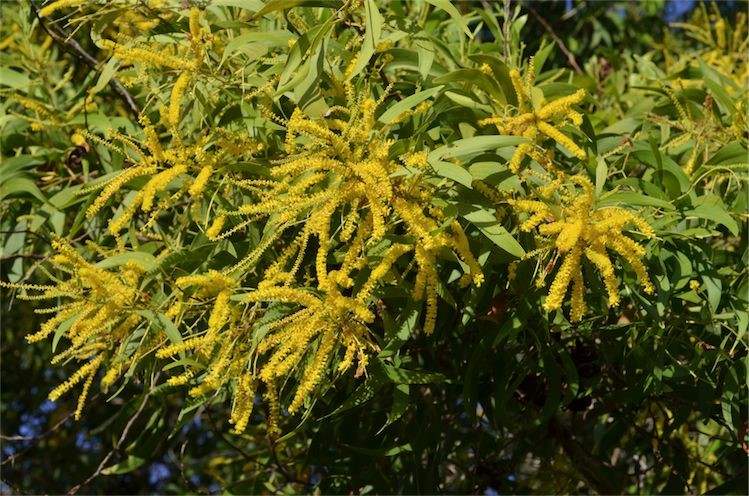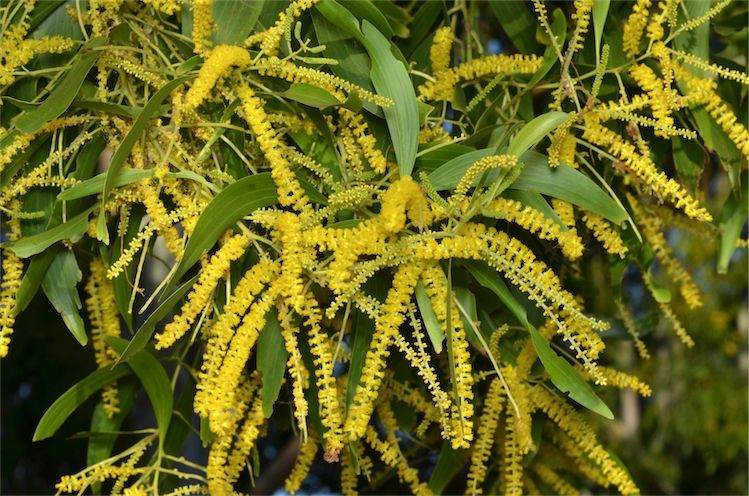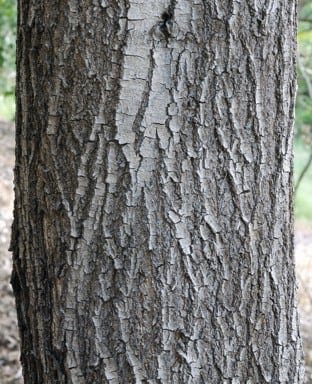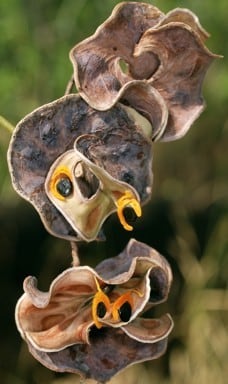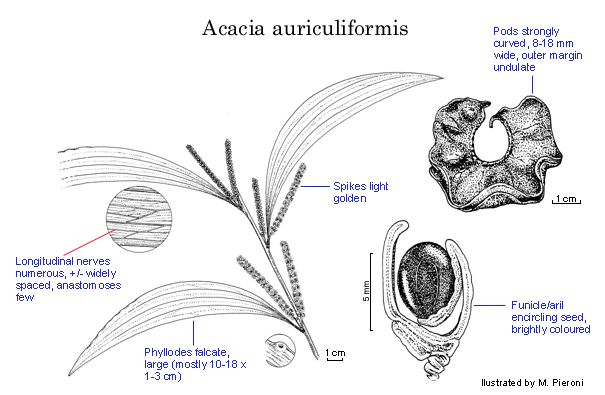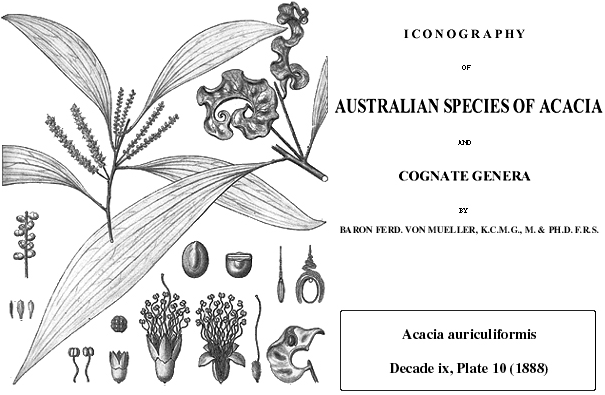Acacia auriculiformis A.Cunn. ex Benth.
WATTLE
Acacias of Australia
Common Name
Northern Black Wattle, Ear-pod Wattle
Family
Fabaceae
Distribution
Occurs on Cape York Peninsula, Qld, N of 17ºS, and in the N.T. N of 14ºS; also recorded from New Guinea and the Kei Is., fide L.Pedley, Contrib. Queensland Herb. 18: 17 (1975), and parts of Indonesia between 11ºS and 17ºS.
Description
Glabrous tree to 35 m high. Bark fissured, grey to black. Branchlets flattened towards apices, ±glabrous. Phyllodes linear to very narrowly elliptic, falcate, (8–) 10–20 (–22.5) cm long, (10–) 12–30 (–52) mm wide, with 3 subprominent longitudinal nerves mostly remaining separate from one another (and the margin) until near base; minor nerves (2–) 3–6 per mm, sparingly anastomosing; gland 1, basal, to 3 mm above pulvinus. Spikes 5–8.5 cm long, interrupted, yellow. Flowers 5‑merous; calyx 0.9–1.3 mm long, dissected for 1/4–1/3, glabrous; corolla 1.7–2.4 mm long, dissected for c. 1/2, glabrous; ovary densely pubescent. Pods strongly curved to form an open coil, flat but outer margins prominently undulate, 3.2–16 cm long, 8–15 (–18) mm wide, coriaceous to ±woody, lightly pruinose, glabrous, transversely nerved. Seeds ±transverse, elliptic to broadly elliptic, flattened, 3.6–5.6 mm long, dark brown to black; pleurogram dark; areole open; funicle encircling seed.
Phenology
Flowers Feb.–Aug.
Habitat
Grows in well-drained sandy or loamy sand soils, beside watercourses and swamps, in closed or low open forests.
Specimens
N.T.: Bathurst Is. township, I.V.Newman 870 (MEL, NSW); Fogg Dam area, M.D.Tindale 6097 & C.Dunlop (CANB, K, NSW). Qld: Cabbage Tree Ck, R.G.Coveny 7035 & P.Hind (A, AD, BRI, CANB, E, K, L, MEL, NSW, NU, QRS, UC, US); Wenlock R., at Moreton Telegraph Office, Cape York Peninsula, 7 Oct. 1973, J.T.Waterhouse (NSW, UNSW).
Notes
Details of ecology, utilisation, etc. of A. auriculiformis are given in J.W.Turnbull (ed.), Multipurpose Austral. Trees & Shrubs 108 (1986).
Often difficult to distinguish from A. polystachya in the absence of pods; apart from differences in spike colour (light golden in A. auriculiformis, ±white to pale yellow in A. polystachya) they differ in details of phyllode nervation: in A. polystachya the most prominent nerves of the phyllodes run together and often join some distance above the base whereas in A. auriculiformis these nerves remain separated from one another. Acacia auriculiformis is sometimes superficially similar to A. aulacocarpa and related species in general phyllode and pod morphology but is readily distinguished in having widely spaced, anastomosing phyllode nerves and a bright yellow funicle which encircles the seed. A putative natural hybrid between A. lamprocarpa and A. auriculiformis occurs at Holmes Jungle, N.T. and a putative garden hybrid between A. auriculiformis and A. spirorbis subsp. solandri is known from Townsville, Qld (i.e. E.M.Jakes s.n., BRI 847069).
FOA Reference
Data derived from Flora of Australia Volumes 11A (2001), 11B (2001) and 12 (1998), products of ABRS, ©Commonwealth of Australia
Author
Minor edits by B.R.Maslin & J.Rogers
Dr M.D.Tindale and Dr P.G.Kodela with the assistance of M.Bedward, S.J.Davies, C.Herscovitch, D.A.Keith and/or D.A.Morrison
This identification key and fact sheets are available as a mobile application:
URL: https://apps.lucidcentral.org/wattle/
© Copyright 2018. All rights reserved.


